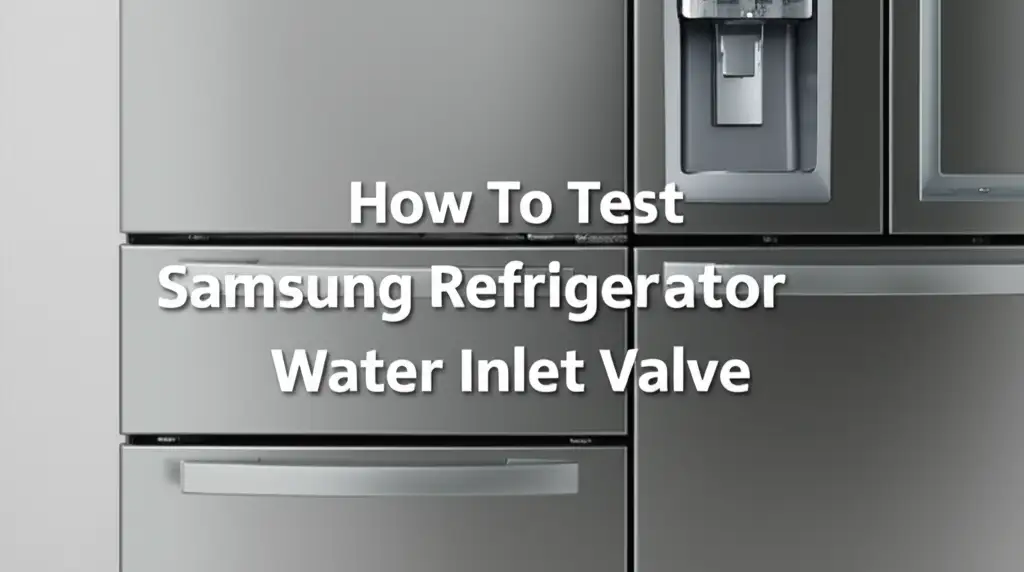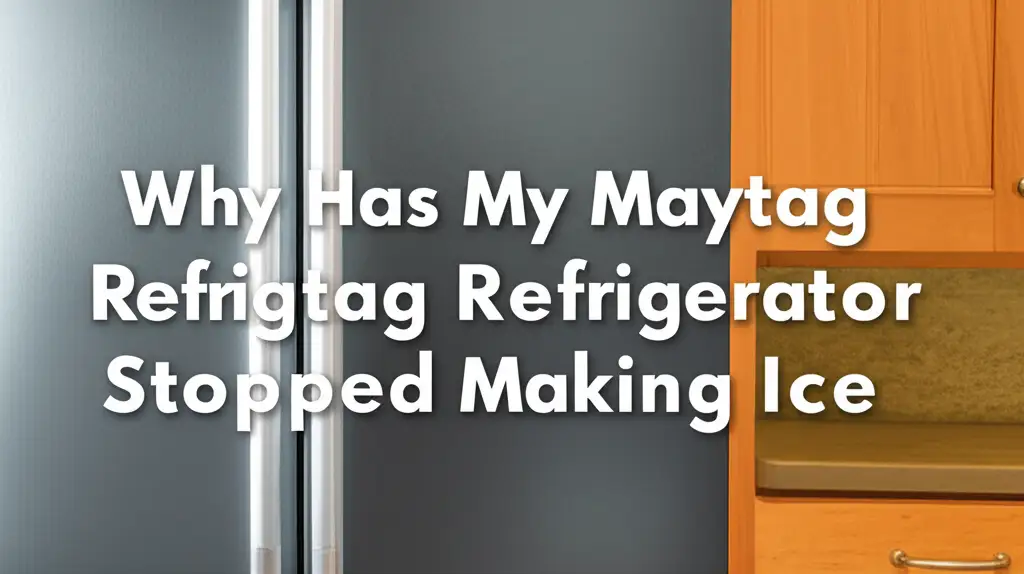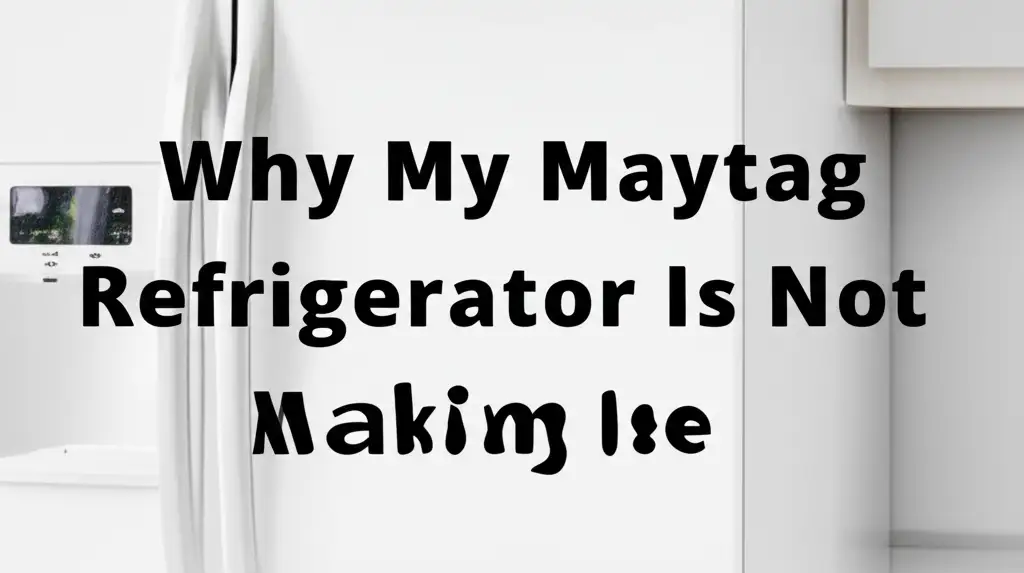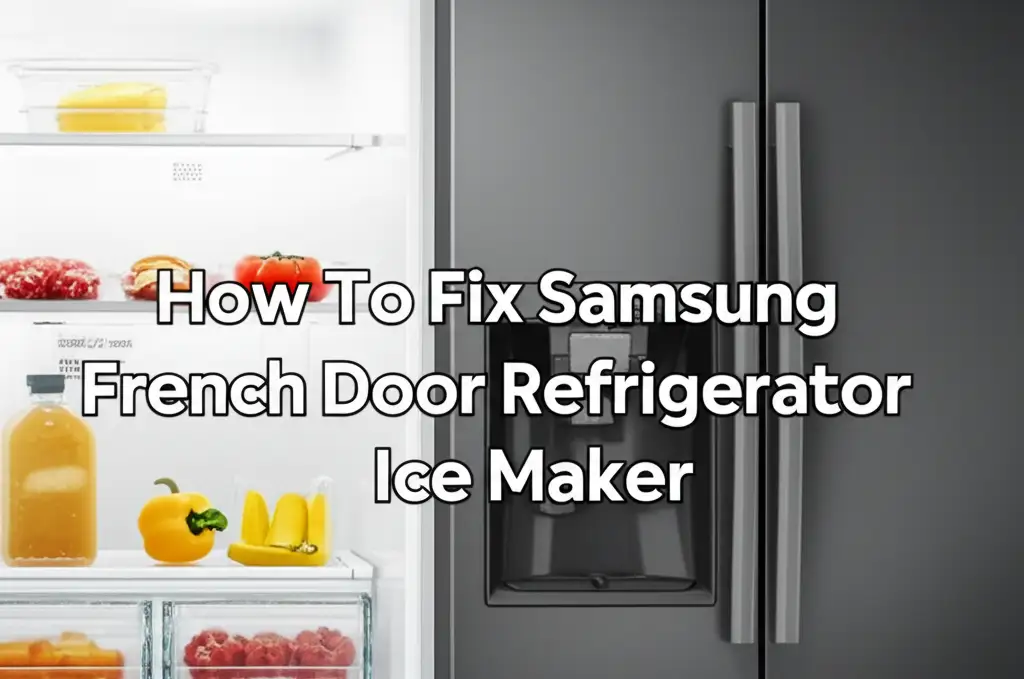· Todd Martin · Appliance Repair · 19 min read
How To Get Frigidaire Refrigerator To Make Ice
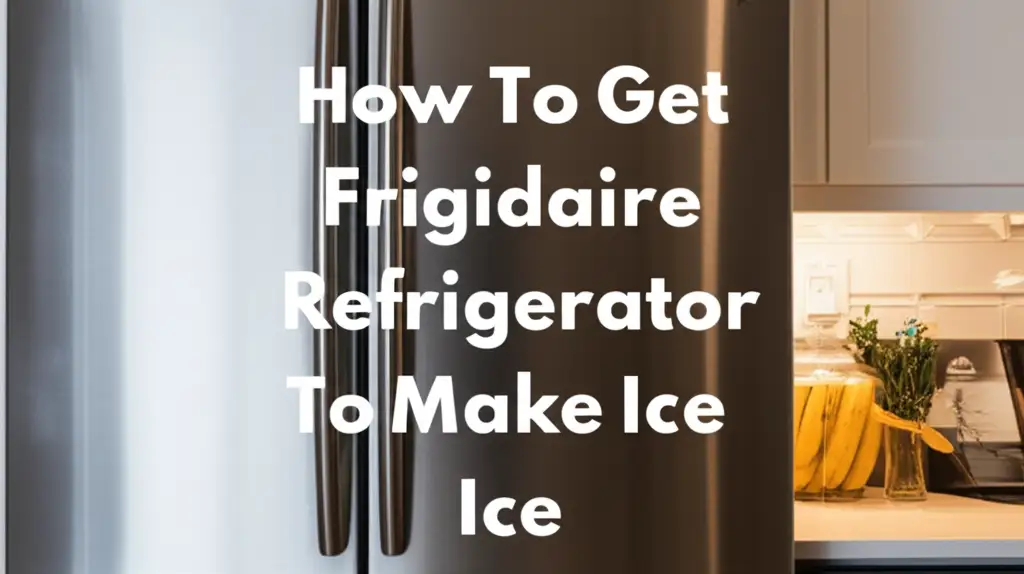
Troubleshooting Your Frigidaire Ice Maker: Get Ice Flowing Again
A working ice maker brings convenience to any home. Many people rely on their refrigerators to produce a steady supply of ice. When your Frigidaire refrigerator stops making ice, it can be frustrating. You expect fresh ice for drinks and daily needs. Getting your Frigidaire refrigerator to make ice again often involves checking a few simple things. This guide will walk you through common reasons for ice maker failure. I will provide clear steps to help you restore ice production. You can have ice flowing smoothly once more.
Takeaway
To get your Frigidaire refrigerator making ice, follow these steps:
- Confirm the ice maker is turned on and not in demo mode.
- Check the water supply line and filter for blockages or issues.
- Verify the freezer temperature is set correctly.
- Inspect the ice maker’s components for obstructions or damage.
- Clean the ice maker and water line regularly.
Clear Answer to Main Query
To get your Frigidaire refrigerator to make ice, ensure the ice maker is on, the water supply is connected and flowing, the freezer temperature is correct, and no ice clogs or obstructions are present in the ice maker mechanism or dispenser chute.
Essential First Steps for Frigidaire Ice Production
When your Frigidaire refrigerator stops making ice, the first step is always to check the basics. These initial checks often solve most common problems. I will show you where to look first. You can quickly pinpoint simple issues.
Confirm Ice Maker Activation and Settings
Your ice maker might simply be turned off. Frigidaire ice makers have an on/off switch or arm. The switch is usually a toggle button or a lever on the ice maker itself. Ensure this switch is in the “On” position. If it is an arm, the wire arm must be in the down position. An upward arm means the ice maker is off or the bin is full.
Sometimes, a refrigerator goes into “demo mode” or “showroom mode.” This mode disables certain functions, like ice making, to save energy in a store setting. If your Frigidaire is in demo mode, it will not make ice. You need to take your Frigidaire refrigerator out of demo mode to restore full functionality. Check your owner’s manual for specific instructions on exiting demo mode for your model. It often involves pressing a combination of buttons on the control panel.
Check Freezer Temperature Settings
The freezer temperature plays a crucial role in ice production. Ice makers need a consistently cold environment to freeze water into ice cubes. If your freezer is too warm, the water will not freeze properly. This leads to no ice production. I recommend setting your freezer temperature between 0°F and 5°F (-18°C and -15°C). This range is ideal for optimal ice production and food preservation.
Use a refrigerator thermometer to confirm the actual temperature inside your freezer. The display panel on your refrigerator may show the set temperature, but an actual thermometer gives you a precise reading. If the temperature is too high, adjust the thermostat and give it several hours to cool down. A stable, cold temperature allows the ice maker to work as designed.
Verify Water Supply Connection and Pressure
For your Frigidaire ice maker to work, it needs a constant supply of water. First, check the water shut-off valve behind the refrigerator. This valve controls the water flow to the ice maker and water dispenser. Ensure the valve is fully open. A partially closed valve can reduce water pressure, causing slow ice production or no ice at all.
Next, inspect the water line itself. The line connects your home’s water supply to the refrigerator. Look for kinks or bends in the hose. A kinked hose restricts water flow significantly. Straighten any kinks you find. Also, ensure the water line is properly connected to the refrigerator’s water inlet valve. A loose connection can cause leaks or prevent water from reaching the ice maker. Proper water pressure is essential. If other water fixtures in your home have low pressure, it might affect your refrigerator’s water supply.
Addressing Water Filter and Inlet Valve Issues
After checking the basic settings, it is time to look at the components that directly handle water flow. The water filter and the water inlet valve are common culprits when a Frigidaire ice maker stops producing ice. These parts can prevent water from reaching the ice maker. I will guide you through inspecting them.
Inspecting and Replacing the Water Filter
A clogged or old water filter is a frequent cause of no ice. The water filter removes impurities from the water entering your refrigerator. Over time, the filter collects sediment and minerals. This build-up restricts water flow. If water is dispensed slowly, or if you have water but no ice, a dirty filter is a likely cause.
Frigidaire recommends replacing the water filter every six months. Even if your water seems clean, sediment can accumulate. I suggest checking your filter’s replacement schedule. Locate your filter, usually inside the refrigerator compartment or in the kickplate at the bottom. Remove the old filter and install a new, genuine Frigidaire replacement. After installing a new filter, flush the system by dispensing several gallons of water through the dispenser. This removes air from the lines and any carbon dust from the new filter. You might notice water leaking from the filter area if it is not seated correctly or if the filter housing is cracked.
Examining the Water Inlet Valve
The water inlet valve is an electrical component that opens to allow water into the ice maker. This valve is typically located at the back of your refrigerator, near the bottom. It connects the main water supply line to the refrigerator’s internal water lines. When the ice maker calls for water, the control board sends power to this valve, causing it to open.
If the valve is defective, it will not open, and no water will fill the ice maker mold. You can test the water inlet valve for continuity using a multimeter. Ensure you unplug the refrigerator first for safety. A common sign of a faulty valve is if you have water from the dispenser, but the Frigidaire refrigerator is not making ice. The dispenser might work because it uses a different path or pressure, or the valve has two solenoids, one for the dispenser and one for the ice maker. You may hear a buzzing sound from the valve when it tries to open but fails. If the valve is bad, it needs replacement. This task can be difficult for some homeowners.
Checking for Frozen Water Lines
A frozen water line is another common problem that stops ice production. The small plastic tube that carries water from the inlet valve to the ice maker mold can freeze. This usually happens if the freezer temperature fluctuates or if the water pressure is too low. When the line freezes, water cannot reach the ice maker.
You can often see the frozen line if you remove the ice maker assembly. Look for ice blockages in the fill tube that leads into the ice maker mold. To thaw a frozen line, unplug the refrigerator and use a hairdryer on a low setting to gently warm the frozen section. Keep the hairdryer moving to avoid overheating the plastic. Alternatively, you can turn off the ice maker and leave the freezer door open for a few hours. This allows the line to thaw naturally. After thawing, plug the refrigerator back in and check for water flow to the ice maker. Make sure to identify and fix the cause of the freezing to prevent recurrence.
Investigating the Ice Maker Mechanism Itself
Once you have ruled out water supply and temperature issues, the problem likely lies within the ice maker unit. The ice maker is a complex assembly with several moving parts. Each component must work correctly for ice production. I will guide you through inspecting these internal parts.
Inspecting the Ice Maker Mold and Ejector Arm
The ice maker mold is where water freezes into ice cubes. The ejector arm then pushes these cubes out into the ice bin. If the mold is cracked or damaged, it might not hold water properly. Check the ice mold for any visible cracks or signs of wear. Sometimes, a piece of ice can get stuck in the mold or jam the ejector arm. This prevents new cycles from starting.
Carefully remove the ice bin and visually inspect the ice maker. Look for any ice cubes that are partially formed or stuck in the mold. Use a plastic utensil to gently dislodge any trapped ice. Ensure the ejector arm can move freely. If the arm is bent or broken, it will not properly push the ice cubes out. A damaged ejector arm often means replacing the entire ice maker assembly.
Checking the Ice Level Sensor (Bail Arm)
Most Frigidaire ice makers have a wire bail arm or an optical sensor. This component tells the ice maker when the ice bin is full. If the arm is in the “up” position, or if the optical sensors are blocked, the ice maker assumes the bin is full and stops production. The wire arm should rest in the “down” position inside the ice bin for the ice maker to produce ice.
Make sure nothing is obstructing the bail arm from moving freely. Sometimes, ice cubes can pile up and block the arm. If your model uses optical sensors, usually small infrared lights located on the sides of the ice maker, ensure they are clean. Wipe them with a soft cloth to remove any dust or frost that might be blocking the signal. If the sensors are blocked, the ice maker will not cycle. Even if the bin is empty, the ice maker “thinks” it is full.
Testing the Ice Maker Module and Motor
The ice maker module contains the motor and control board that govern the ice making cycle. This module initiates the water fill, controls the freezing time, and activates the ejector arm. If you have checked everything else and your Frigidaire is still not making ice, the module itself might be faulty.
A common sign of a bad module is if the ice maker is not cycling at all. You can sometimes force a test cycle on some models by locating a small hole or button on the module. Pressing this button or inserting a small screwdriver can manually start a cycle. If it does not respond, or if you hear unusual noises, the module or its motor might be bad. Replacing the ice maker module is generally straightforward. However, it requires careful handling of electrical components. Always unplug the refrigerator before attempting any repairs. A new module comes with instructions for installation.
Resolving Frozen or Clogged Components
Even if water reaches the ice maker, internal blockages can prevent ice from dispensing or forming correctly. Frozen components are a common issue, especially within the ice dispenser system. I will explain how to tackle these ice-related clogs.
Clearing the Ice Dispenser Chute and Auger
Many Frigidaire refrigerators have an ice dispenser on the door. If your ice maker produces ice but it is not coming out, the dispenser chute is likely clogged. Ice cubes can melt slightly and then refreeze, forming a solid block of ice in the chute. This prevents new ice from being dispensed. You might also find your Frigidaire refrigerator only making crushed ice if the auger mechanism is partially blocked.
To clear the chute, first unplug the refrigerator. Then, use a plastic or wooden utensil to carefully break up any visible ice in the chute. Never use sharp metal objects, as they can damage the dispenser components. You can also use a hairdryer on a low setting to melt the ice block. Keep the hairdryer moving to prevent damage to the plastic parts. Once clear, test the dispenser. If the auger blades themselves are jammed, you may need to remove the ice bin and check the auger motor assembly.
Thawing a Frozen Ice Bucket or Auger Motor
Sometimes, excessive frost or a large chunk of ice can freeze the entire ice bucket or the auger motor solid. This usually happens due to air leaks around the freezer door gasket or prolonged exposure to warm air. When the auger motor freezes, it cannot rotate to dispense ice. The ice bucket also becomes difficult to remove.
You can try completely emptying the ice bucket and thawing it outside the refrigerator. Allow it to come to room temperature. This melts any frozen ice around the auger mechanism within the bucket. For a frozen auger motor inside the freezer compartment, you will need to unplug the refrigerator. Then, use a hairdryer or simply wait for the freezer to warm up and melt the ice. This process can take several hours or even overnight. Once thawed, dry all components thoroughly before putting them back. Make sure the freezer door seals properly to prevent future frost build-up.
Addressing General Frost Buildup
Excessive frost buildup in the freezer can impact the ice maker’s performance. Frost can block air vents, affect temperature consistency, and even physically interfere with the ice maker’s moving parts. If you see a thick layer of frost on the freezer walls or on the ice maker itself, a manual defrost might be necessary.
To perform a manual defrost, unplug your Frigidaire refrigerator. Remove all food items and store them in a cooler. Leave the freezer door open. Place towels on the floor to catch melting water. This process can take several hours. Once all the ice and frost have melted, thoroughly dry the interior. Plug the refrigerator back in and allow it to cool down to the correct temperature before restarting the ice maker. Regular cleaning can help prevent severe frost buildup. Ensure the freezer door gasket seals tightly. A faulty door gasket allows warm, moist air into the freezer, leading to excessive frost.
Maintenance for Consistent Frigidaire Ice Production
Regular maintenance is key to keeping your Frigidaire ice maker working well. Preventing problems is always better than fixing them. Simple routine checks and cleaning can extend the life of your ice maker. I will share some essential tips to help your ice maker run smoothly.
Cleaning the Ice Maker Unit
Over time, mineral deposits from water can build up on the ice maker’s components. This includes the ice mold and the fill tube. These deposits can interfere with the ice maker’s ability to fill, freeze, and eject ice. Dirt or food particles can also fall into the ice bin, leading to unsanitary conditions and potential clogs. Regular cleaning keeps your ice tasting fresh and prevents blockages.
To clean your Frigidaire ice maker, first, turn it off and empty the ice bin. Discard all old ice. Some Frigidaire models allow you to easily remove the entire ice maker assembly. If yours is removable, take it out. Wash the ice maker and the ice bin with warm, soapy water. Use a soft cloth or sponge. Avoid abrasive cleaners or scouring pads, as they can scratch the surfaces. Rinse all parts thoroughly with clean water. Ensure everything is completely dry before reassembling and placing them back into the freezer. You can also clean your refrigerator ice maker’s water line. Learn how to clean your refrigerator ice maker water line for comprehensive maintenance.
Maintaining Proper Freezer Air Circulation
Good airflow within the freezer is vital for efficient ice production. The evaporator coils need to dissipate heat effectively to cool the freezer. If vents are blocked, or the freezer is overpacked, cold air cannot circulate properly. This can lead to warmer temperatures around the ice maker area. Consistent cold air ensures water freezes quickly and thoroughly.
Avoid overfilling your freezer. Leave some space between items for air to circulate. Do not block the air vents, which are usually located at the back or sides of the freezer compartment. If you see frost buildup blocking these vents, it might indicate a defrost system issue. Ensure your refrigerator is level. An unlevel refrigerator can sometimes affect the water distribution to the ice maker or cause issues with door sealing. Check the door gasket periodically for cracks or gaps. A damaged gasket allows warm air to enter the freezer, leading to frost and inefficient cooling.
Scheduled Water Filter Replacement
I mentioned this earlier, but it is worth emphasizing its importance as a maintenance task. The water filter is critical for water quality and ice maker performance. A clogged filter will inevitably lead to reduced water flow to the ice maker. This results in smaller ice cubes, slower production, or no ice at all. Many Frigidaire models have an indicator light that reminds you when to change the filter.
Even without an indicator, aim to replace your Frigidaire water filter every six months. If your household uses a lot of ice or your tap water has high mineral content, you might need to replace it more frequently. Keeping up with this simple replacement schedule ensures a steady supply of clean water to your ice maker. It also prevents unnecessary strain on the water inlet valve. A fresh filter helps maintain optimal water pressure and flow. You can learn more about general ice maker cleaning tips here: How to Clean a Refrigerator Ice Maker.
When to Seek Professional Help for Frigidaire Ice Maker Issues
You have tried all the troubleshooting steps. You have checked the power, water, temperature, and cleaned the components. But your Frigidaire refrigerator still refuses to make ice. At this point, the problem might be more serious. It is time to consider calling a qualified appliance technician. I will tell you when professional help is the right choice.
Identifying Complex Electrical or Mechanical Failures
Some ice maker problems go beyond simple fixes. These include issues with the main control board, faulty sensors, or a completely broken ice maker motor. You might also encounter problems with the defrost system that affects the ice maker. If you suspect an electrical problem, like no power reaching the ice maker assembly, it is best not to attempt repairs yourself. Dealing with electricity can be dangerous.
Complex mechanical failures, such as a seized auger motor or a damaged water valve that you cannot replace, also warrant professional attention. A technician has the specialized tools and diagnostic equipment to identify these hidden problems. They can safely test components like thermostats, solenoids, and wiring harnesses. Trying to fix these issues without proper training can cause further damage to your appliance or lead to personal injury.
Recognizing Persistent Leaks or Error Codes
While I touched on water leaks from the filter, persistent water leaks from other areas of your Frigidaire refrigerator can be a sign of a more significant problem. Water leaks, especially if they are pooling under the refrigerator or inside the freezer compartment, can indicate issues with the drain pan, defrost drain tube, or a cracked water line. These leaks can lead to water damage in your home.
Similarly, if your Frigidaire refrigerator displays specific error codes related to the ice maker or freezer functions, consult your owner’s manual. Some codes indicate serious component failures. For example, a flashing “H 1” on some Frigidaire models could point to a high-temperature issue that impacts ice production. While some Frigidaire error codes might have simple fixes, others need professional diagnosis. If you cannot understand or resolve an error code, a technician can interpret it and fix the underlying issue.
Weighing Repair Costs vs. Replacement
Before calling a professional, consider the age of your Frigidaire refrigerator. If your refrigerator is old and constantly experiencing issues, the cost of repairing the ice maker might be significant. A technician can give you an estimate for the repair. You can then compare this cost to the price of a new refrigerator.
Sometimes, the repair cost for a major component, like the compressor or the entire ice maker assembly, approaches the cost of a new appliance. In such cases, replacing the refrigerator might be a more cost-effective long-term solution. Discuss these options with the technician. A professional can provide valuable insight into the overall health of your appliance. They can help you make an informed decision.
Frequently Asked Questions (FAQ)
Q: Why is my Frigidaire refrigerator ice maker not producing ice?
A: Your Frigidaire ice maker might not produce ice due to several reasons. Common culprits include the ice maker being turned off, a kinked water line, a clogged water filter, or an incorrect freezer temperature. Checking these basic things first can often solve the problem quickly.
Q: How long does it take for a Frigidaire ice maker to make ice?
A: A new Frigidaire ice maker typically takes about 24 hours to begin producing ice after initial setup. After that, it should produce a batch of ice every 90 minutes to 3 hours. Full ice production can vary based on freezer temperature and usage.
Q: What temperature should my Frigidaire freezer be for ice making?
A: For optimal ice production, your Frigidaire freezer should be set between 0°F and 5°F (-18°C and -15°C). This temperature range ensures water freezes efficiently. Temperatures above 5°F can significantly slow down or stop ice production.
Q: Can a dirty water filter stop my Frigidaire ice maker from working?
A: Yes, a dirty or clogged water filter is a very common reason for a Frigidaire ice maker to stop working. The filter traps sediment and impurities, which can restrict water flow to the ice maker over time. Replacing it every six months is recommended.
Q: My Frigidaire refrigerator makes water, but no ice. What is wrong?
A: If your Frigidaire refrigerator dispenses water but does not make ice, the issue likely lies with the ice maker unit itself or the water line specifically leading to it. This suggests the main water supply is fine. Check for a frozen fill tube or a faulty ice maker module.
Q: How do I reset my Frigidaire ice maker?
A: To reset your Frigidaire ice maker, first locate the on/off switch or the test button. Many models have a small button or a lever that you press and hold for a few seconds. If there’s no button, unplug the refrigerator for 5 minutes, then plug it back in. This often resets the ice maker’s internal controls.
Conclusion
Getting your Frigidaire refrigerator to make ice again is often a straightforward process. You typically need to check power, water supply, and temperature settings. I have walked you through the most common issues, from a simple flick of a switch to more involved water line inspections. Remember to regularly maintain your ice maker. This includes replacing the water filter and cleaning components. These actions keep your ice maker running efficiently.
If you have tried all the steps and your Frigidaire ice maker still does not work, do not hesitate to call a professional technician. They can diagnose complex problems safely and effectively. Enjoy the convenience of a fully functioning ice maker in your Frigidaire refrigerator. Keep your drinks cold and your family happy.
- Frigidaire ice maker
- refrigerator ice production
- ice maker troubleshooting
- no ice Frigidaire
- ice maker repair


